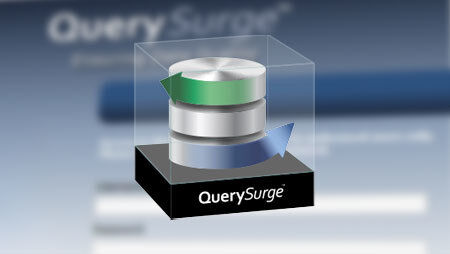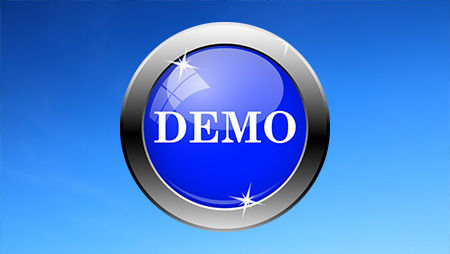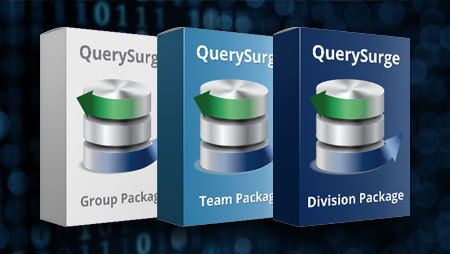Frequently Asked Questions (FAQ)
Have a question about QuerySurge?Find your answers here

Below are our most frequently asked questions. If you do not see your question, please fill out the form at the bottom of the page and we will answer it.
- Architecture
- Installation
- Connectivity
- Using QuerySurge
- Data
- Integration
- Reporting
- Licensing
- Trials
- Training
- Support
What is QuerySurge's architecture?
QuerySurge consists of the following components:
- The QuerySurge Application Server (Tomcat)
- The QuerySurge Database (MySQL)
- QuerySurge Agent(s) – a minimum of one must be deployed
- QuerySurge Execution API (optional)
For more information and a detailed look at the QuerySurge product Architecture components, see this page: http://www.querysurge.com/product-tour/product-architecture
What is an Agent?
The QuerySurge Agent is the component of the architecture that actually executes queries against Source and Target data sources, returning the results to QuerySurge. Agents are deployed in a hub-and-spoke relationship to the QuerySurge application server, as you can see in the QuerySurge product architecture diagram.
How many Agents will I need?
For a QuerySurge Trial or a POC, one agent is normally sufficient.
For production deployment, the answer is dependent on multiple factors (your Source/Target data base/data source products, the hardware Source/Target are deployed on, your style of query-writing), and is best determined as you gain more experience with QuerySurge in your own environment.
Do I need to use my own backend database?
Nope! QuerySurge comes with its own embedded database. We handle the database licensing, so deploying QuerySurge will not affect any licensing that your organization currently has.
What can I install on for a trial?
For a QuerySurge trial, the specifications can be found here>>
What can I install on for production deployment?
Our recommended production deployment specifications can be found here>>
Does the QuerySurge Agent need to be deployed on my database servers?
No – in fact, we do not recommend deploying Agents on your database servers.
Agents should be deployed in your environment in a hub-and-spoke relationship to the QuerySurge application server. Any boxes or VMs with sufficient resources (see questions above) to perform QuerySurge tasks can be used, including the Testers’ desktops.
I have queries in my trial installation of QuerySurge that I want to use after I purchase a license. Can I keep them?
Yes. If you deployed your Trial installation on the same hardware as you plan for your production QuerySurge installation, you’re all set – all we need to do is apply your new license to your existing QuerySurge instance. Everything else stays the same.
If you need to move your queries from your trial QuerySurge instance to your “permanent” QuerySurge installation, please contact us or get in touch with your account manager. We’ll be happy to help you!
Does QuerySurge install locally for each user, or is it a web-based application?
QuerySurge is a pure Web 2.0 application with a database server behind an app server. Users can access the software through any supported browser (Chrome, FireFox, IE 9 and newer, Safari).
Where can I get help if I have issues during installation?
Most users will start by searching our Knowledge base, which is available on our web site at the top menu or through the Orange Help button at the bottom left of every page of our web site. From there you can either search for information or reach out to our support team directly. To view the Knowledge Base, click here>>
What technologies are supported?
QuerySurge supports all Hadoop and NoSQL data stores, Data Warehouses, traditional databases, flat files, XML, Excel, mainframe, JSON and any other JDBC compliant data structure. For a full list of technologies supported, click here>>
How do you configure the connections of the databases for source to target?
All database connections can be configured using QuerySurge’s built-in Connection wizard. You will have the option to access this wizard when installing the application.
Are the database connections set up on a per-user basis?
No. Once a Connection has been set up in the application, all authorized QuerySurge users can build queries using any connection.
How does QuerySurge handle flat file querying?
QuerySurge ships with a flat file JDBC driver that makes your files “look” like database tables to QuerySurge. You can then query your files using a standard SQL dialect.
How does QuerySurge handle XML file querying?
We have an XML file JDBC driver that makes your XMLs “look” like database tables to QuerySurge. You query your files using a standard SQL dialect. Contact us for information.
Does QuerySurge support data comparison from a flat file to data in a database?
Yes, QuerySurge is built for this! You can query flat file vs. database, excel file vs. database, XML file vs. database, flat file vs. flat file, Hadoop/Hive vs. database, Hadoop/Hive vs. flat file, etc. in any combination.
If you have a specific data source combination to ask us about, don't hesitate to reach out to us!
How is setup done for Source/Target?
QuerySurge has a Connection Wizard in the Administrative view to take you through the process of setting up connections to your Source and Target data sources.
QuerySurge Agents - what are they? Where are they deployed in the environment?
The QuerySurge Agent is the component of the architecture that actually executes queries against Source and Target data sources, returning the results to QuerySurge. Agents are deployed in a hub-and-spoke relationship to the QuerySurge application server.
Are there any syntax limitations for writing QueryPairs?
There are no syntax limitations. Any query syntax that you put in QuerySurge will be executed as-is. You may use all ANSI SQL syntax plus any custom syntax your database or data source supports.
Can I use my existing SQL queries in QuerySurge as QueryPairs?
Absolutely - most testing groups already have SQL for their current testing process. This SQL can be either be used directly in QuerySurge or tweaked for QuerySurge to give you a jump-start in implementing your automated data testing effort.
Do I have to manually run my tests, or can I schedule them to run?
You can schedule runs in QuerySurge either by creating a QuerySurge Scenario, which lets you schedule based on time, or you may use the QuerySurge execution API, which lets you schedule based on events external to QuerySurge.
Is there an API or command line support to kick off an execution run?
The QuerySurge execution API lets you schedule based on events external to QuerySurge. The API is provided both as a RESTful and command-line API that you can deploy in your environment and call into QuerySurge’s execution engine from external processes. It also has 60+ other calls that allow you to do everything the QuerySurge interface allows you to do.
What is the typical learning curve for a new QuerySurge user? Are there education services available?
QuerySurge provides a clean, intuitive workflow for all the major tasks in Data Warehouse/ETL testing and Data migration testing, and our users find it easy to move their work into QuerySurge quickly.
QuerySurge implementation is fully supported by courseware – browse our QuerySurge course listings for more information.
Do I need to know SQL to use QuerySurge?
QuerySurge has a Data Wizard to generate simple SQL queries for your straightforward tests. SQL knowledge will help you craft queries for your more complex tests.
See our course offerings to jump-start your SQL knowledge and master the skills necessary for QuerySurge.
Can SQL be generated automatically within QuerySurge?
QuerySurge has a Data Wizard to generate simple SQL queries for your straightforward tests.
Does QuerySurge provide version control for the QueryPairs?
QuerySurge retains history for your QueryPairs and your Suites. You can see all revisions on each QueryPair, who made the revision, and when it was performed. You can also generate reports on QueryPair and Suite history for project audit or other management purposes.
Can I share my reports with others?
Absolutely. QuerySurge reports can be exported either in pdf format or in Excel format for either sharing with co-workers of for documentation purposes.
How is setup done for Source/Target?
QuerySurge has a Connection Wizard in the Administrative view to take you through the process of setting up connections to your Source and Target data sources.
Are there any data size limitations?
QuerySurge imposes no data size limitations on queries. However, the hardware that you deploy QuerySurge on will impose its own limitations. More hardware resources will give you greater flexibility with QuerySurge.
What technologies are supported?
QuerySurge supports all Hadoop and NoSQL data stores, Data Warehouses, traditional databases, flat files, XML, Excel, mainframe, JSON and any other JDBC compliant data structure. For a full list of technologies supported, click here>>
Does QuerySurge test unstructured data?
If your unstructured data is in a datastore that can accommodate JDBC connectivity, we should be able to handle it. Contact us if you would like to discuss specifics.
What kinds of data can QuerySurge test?
QuerySurge can test most of the standard data types that are common to current data stores and databases. This includes CLOB and BLOB data types.
Are there API options?
QuerySurge provides both RESTful and command-line API access. QuerySurge integrates with virtually all DevOps and DataOps solutions in the marketplace. Testers can dynamically generate, execute, and update tests and data stores utilizing 60+ API calls with almost 100 different properties. For more information, please visit our DevOps for Data page here>>
Does QuerySurge integrate with any Test Management tool?
QuerySurge currently integrates with Jira, Micro Focus ALM/Quality Center, Microsoft’s Azure DevOps, IBM’s Rational Quality Manager. Through the DevOps for Data API, QuerySurge can integrate with virtually any other software that also has an API. For more information on our Test Management connectors, please visit the connector page here>>
Can QuerySurge be automatically launched by another tool?
Through the API, QuerySurge can be automatically launched by any ETL tool, Scheduler or Automated Build software that has command line API access. For a list of software we integrate with, please visit our DevOps, CD/CI page here>>
Does QuerySurge support custom reporting options?
QuerySurge reporting is highly customizable with multiple filters on most reports.
Can my reports be distributed and/or exported to others?
Reports can generally be exported to a pdf or Excel format.
Can QuerySurge notify me by email about executions?
Absolutely. QuerySurge has an email notification feature that lets you set up custom email notifications to other QuerySurge users about executions, including execution outcomes and metrics, based on triggers of your own choosing.
How does the licensing work?
QuerySurge licensing is user-based. See our licensing model for the details.
Do we need to acquire licenses for each Source/Target technology, or is this included with QuerySurge?
Nope! We use standard drivers for all Source/Target technologies, and if we don’t ship with a driver you want, you can deploy it yourself. No additional licensing is required.
What can I install on for a trial?
You can install QuerySurge on most desktops or even laptops. Resources (memory, disk space) are important for QuerySurge! The more you have, the more you can do during your trial.
Which features are disabled in a trial?
The features that are disabled in a 15-day trial are BI Tester, DevOps for Data, Import/Export, Ready for Analytics, and QuerySync. If you would like to try these features, BI Tester and DevOps for Data have their own downloads and all are available in a Proof-of-Concept. See all variations of trials here>>
Do I need to install QuerySurge in my own environment to try it?
Nope! You can try QuerySurge in a Hosted Cloud Trial – our environment and our data, but you’ll be up and running with QuerySurge in minutes. See what else the Cloud trial has to offer and sign up.
My company would like to formally evaluate QuerySurge – do you offer support during trials?
Sign-up for a QuerySurge Proof-of-Concept. You can use QuerySurge for 45 days with weekly support sessions and regular communication from your dedicated account team. See more about what you'll get with a PoC and sign up.
If I have any questions or issues during my trial, what is the best way to get an answer?
Most users will start by searching our Knowledge base, which is available on our web site at the top menu or through the Orange Help button at the bottom left of every page of our web site. From there you can either search for information or reach out to our support team directly. To view the Knowledge Base, click here>>
Can I get trained on QuerySurge?
Sure! We have a full range of self-paced and instructor-led (in the cloud)training, from an ETL testing fundamentals course, to introductory training for QuerySurge, to SQL courses to build your testing-by-SQL skills. Browse our course selection to see which courses best fit your needs.
What are the options for training course delivery?
We have 2 delivery options:
- (1) Free self-paced training
- (2) Live, instructor-led training in the Cloud (there is a cost for this item)
Class size requirements apply.
Do you offer a formal certification for QuerySurge?
We do offer 3 certifications – free for customers and partners:
- Certified ETL Tester
- Certified ETL Testers have demonstrated an ability to strategize, plan and design a successful data validation & ETL testing project.
- Level: Foundational
- Required Skills: Basic QA and testing knowledge
- QuerySurge Certified Practitioner
- QuerySurge Certified Practitioners have a deep understanding of how to use QuerySurge to conduct data validation & testing. They have demonstrated the ability to set up connections, create and execute tests that compare source and target data stores, analyze results and identify bad data patterns and data anomalies.
- Level: Intermediate
- Required Skills: Basic understanding of how to implement QuerySurge (can be obtained through free self-paced training)
- QuerySurge Certified Administrator
- QuerySurge Certified Administrators have a deep understanding of how to administer QuerySurge. Certified Administrators have demonstrated the ability to set up projects, manage users and agents, and configure QuerySurge server settings.
- Level: Intermediate
- Required Skills: QuerySurge Certified Practitioner certification
Let more about certifications here>>
If I run into an issue with QuerySurge, how can I get help?
Either visit our Knowledge Base & Community Forums (https://querysurge.zendesk.com/hc/en-us) or click on the Orange Button on the bottom left of our website! These are the quickest ways to get information or log a ticket within our system.
Does QuerySurge have offices outside of the United States?
While the QuerySurge team is located in the U.S., we support customers globally. We also have built an extensive partner ecosystem that is located in every locale in the world. For information on our partners, please visit our Partner page here>>



